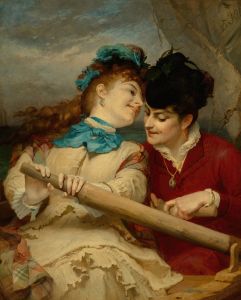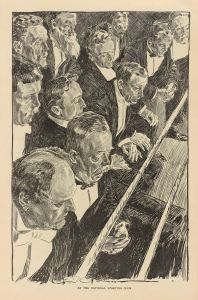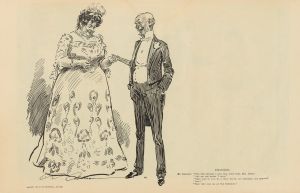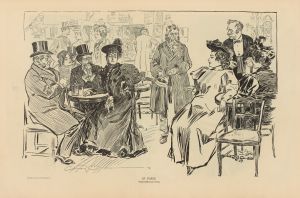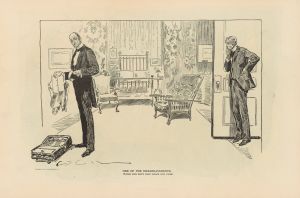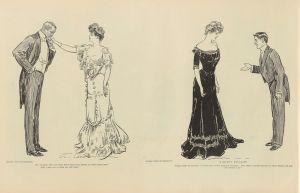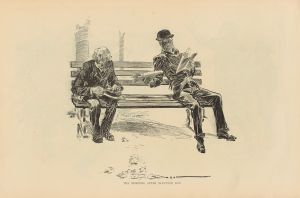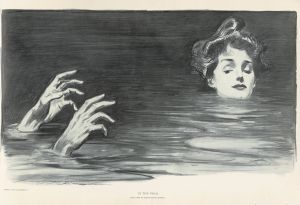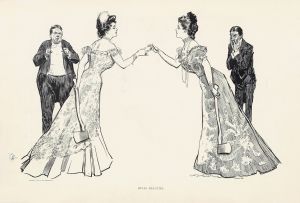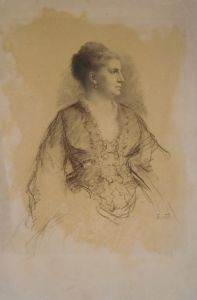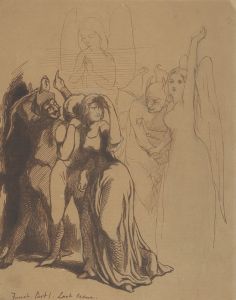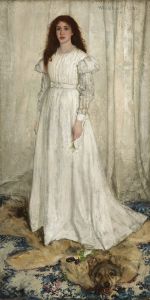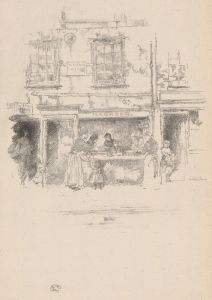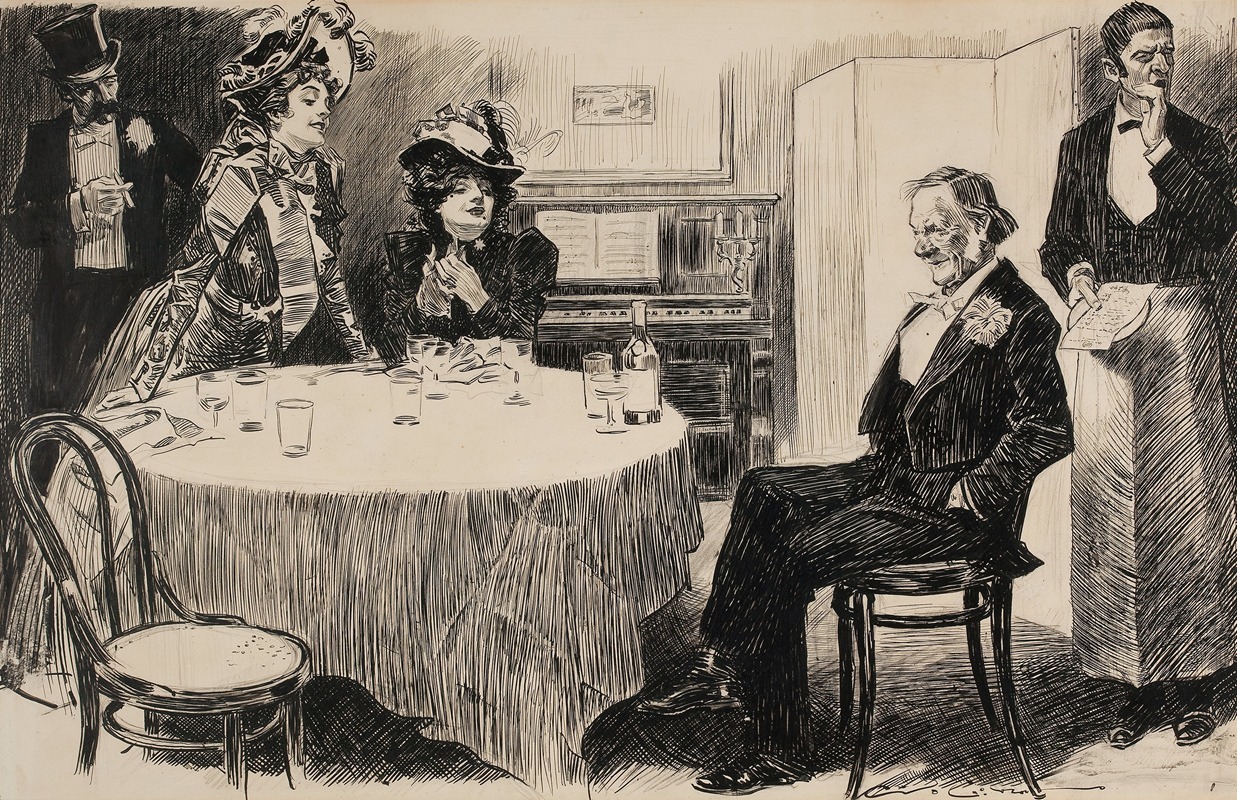
The Education of Mr. Pipp
A hand-painted replica of Charles Dana Gibson’s masterpiece The Education of Mr. Pipp, meticulously crafted by professional artists to capture the true essence of the original. Each piece is created with museum-quality canvas and rare mineral pigments, carefully painted by experienced artists with delicate brushstrokes and rich, layered colors to perfectly recreate the texture of the original artwork. Unlike machine-printed reproductions, this hand-painted version brings the painting to life, infused with the artist’s emotions and skill in every stroke. Whether for personal collection or home decoration, it instantly elevates the artistic atmosphere of any space.
"The Education of Mr. Pipp" is a notable work by Charles Dana Gibson, an influential American illustrator best known for creating the iconic "Gibson Girl" image. Gibson's illustrations were widely recognized in the late 19th and early 20th centuries, capturing the social dynamics and cultural nuances of the time.
Charles Dana Gibson was born on September 14, 1867, in Roxbury, Massachusetts. He studied at the Art Students League in New York City and began his career as an illustrator in the 1880s. His work gained popularity through publications such as Life, Harper's Weekly, and Scribner's, where his keen observations of society were both celebrated and critiqued.
"The Education of Mr. Pipp" is a series of illustrations rather than a single artwork. It was first published in Life magazine in the early 1900s and later compiled into a book. The series humorously depicts the adventures of Mr. Pipp, a wealthy American businessman, and his family as they travel through Europe. Through these illustrations, Gibson offers a satirical look at the American nouveau riche and their encounters with European high society.
The character of Mr. Pipp is portrayed as somewhat naive and bumbling, often finding himself in amusing situations due to cultural misunderstandings and his own lack of sophistication. Despite his wealth, Mr. Pipp's experiences highlight the social faux pas and the challenges faced by Americans abroad during this era. The series cleverly contrasts the American characters with their European counterparts, emphasizing differences in manners, customs, and social expectations.
Gibson's work is characterized by its detailed pen-and-ink drawings, capturing the fashion, architecture, and social settings of the time with precision and wit. His illustrations often include subtle humor and social commentary, reflecting the complexities of the Gilded Age and the Progressive Era in America.
"The Education of Mr. Pipp" was well-received for its humor and insight, contributing to Gibson's reputation as a leading illustrator of his time. The series is an example of how Gibson used his art to comment on societal trends and the cultural exchanges between America and Europe. It remains a valuable piece of visual history, offering a glimpse into the attitudes and lifestyles of the early 20th century.
Gibson's influence extended beyond his illustrations; he played a significant role in shaping the visual culture of his era. The "Gibson Girl," another of his creations, became a symbol of the idealized American woman, representing beauty, independence, and social grace. This figure had a lasting impact on fashion and popular culture, further cementing Gibson's legacy in the art world.
In summary, "The Education of Mr. Pipp" is a significant work by Charles Dana Gibson that showcases his talent for satire and social commentary. Through the character of Mr. Pipp, Gibson provides a humorous and insightful exploration of American and European cultural interactions during the early 20th century.





